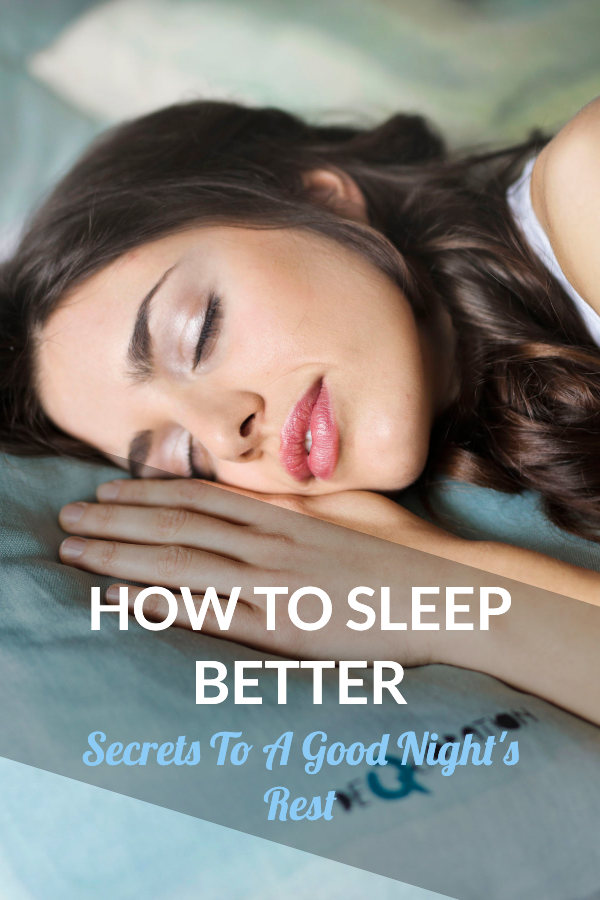The post Breathing Well appeared first on MetaMed.
]]>Why Learning to do it Properly is so Important
It is something we all do thousands of times every day. Whether we are awake or asleep, resting or active; to breathe is to be alive. Whilst most of us don’t take much notice of our breathing, there are a few very important reasons why we should.
- Improves blood flow
- Improves energy
- Supports a strong immune system
- Alleviates stress
Let's just touch on one of the issues most people have in life and how improving your breathing can help.
Stress response
We’ve all been told at one time or another to “take a deep breath” when we have been feeling stressed. As unhelpful and annoying as this can be at the time, there is some sense behind this.
Our “fight or flight” instinct, also known as our body’s stress response, is how we decide to confront or avoid danger. When we breathe in deeply our lungs expand and compress the walls of the heart, restricting blood flow. To compensate, our heart rate increases stimulating this fight or flight stress response.
When we breathe out, the pressure in the thoracic cavity drops and the body relaxes! So, in short, it is the exhale that truly helps us relax, not taking a deep breath in!
This brings us to an issue we see regularly in clinic – people holding their breath in, or not breathing out fully. It's usually the first change when stress is encountered – holding your breath. Over time if we continue this pattern we can keep our body in the ‘fight or flight' response. Stress and anxiety anyone? No thanks.
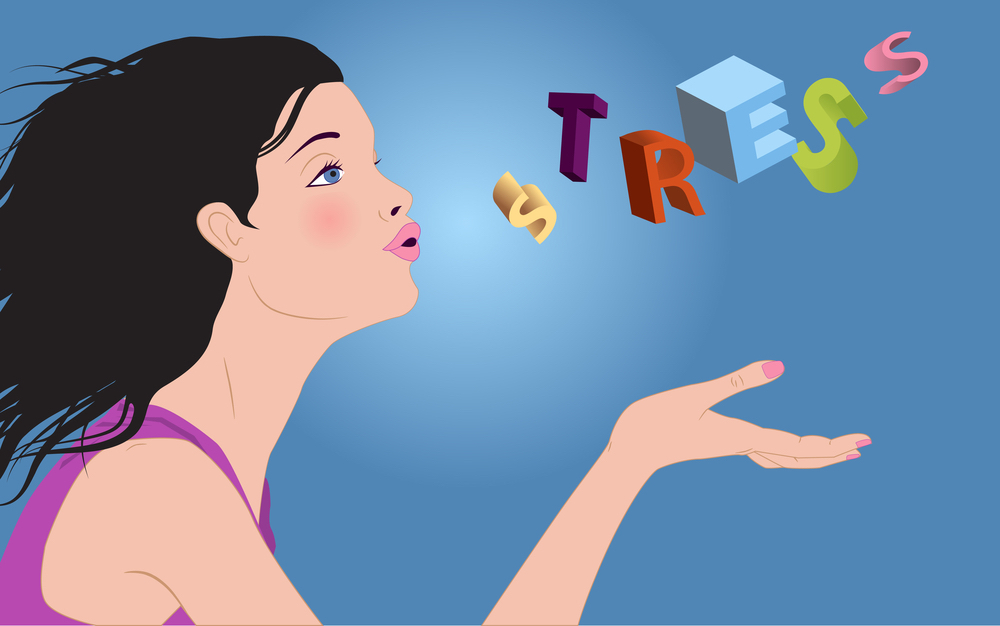
One Simple Trick to Alleviate Stress
Next time you feel stressed or anxious make a mental note of your breathing. Are you holding your breath? Are your lungs full and chest tight? Taking a moment to forcefully exhale several times can make a big difference and quickly reduce the fight or flight response.
Try This Breathing Technique
Inna Kahzan of Harvard medical school recommends that 40% of the breath cycle is for inhaling, and 60% is for exhaling – so for a 4 second breath in, take 6 to exhale. This ensures not only a full exhale, but also slows the breathing, avoiding risks of hyperventilation which can make that stress response much worse.
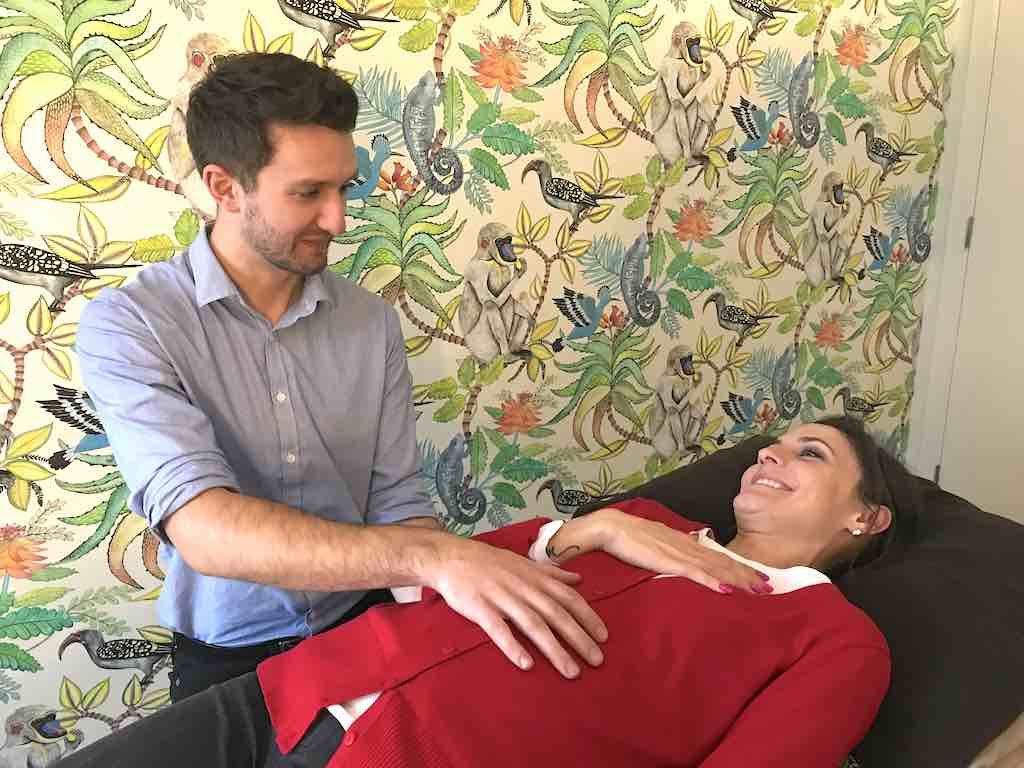
Two Ways to Breathe
- Belly breathing
- Upper chest breathing
While breathing is mostly automatic, every breath is not identical. Diaphragmatic (AKA belly breathing) is best for keeping that stress response to a minimum, but unfortunately the stresses of day to day life can lead us to quickly fall into a habit of breathing into the upper chest. This is not ideal, and aside from typically shallower breathing, it can also cause tightening of muscles in the front of the neck and chest over time. If you catch yourself doing this remember the 40/60 rule and EXHALE for longer!
The stress response/breathing relationship is cyclical, so busy lifestyles often feed into poor breathing patterns. However habits form young, and breathing is no exception either. Some of our cultural expectations, such as the wish to have a flat tummy, means we learn from an early age to hold our stomach muscles in tight.
As I’m writing this, I’m trying to breathe deeply into my belly whilst hunched over my desk (like many who work in an office) – try it, it’s practically impossible. This is another great example of the importance of breathing and taking time away from the desk every so often.

If you know poor breathing habits may be contributing to your pain or symptoms come and visit one of our practitioners. If you're unsure we're more than happy to book in a 15 minute complimentary chat to see if we can help you.
Alternatively, if you're not anywhere near Wanaka or Queenstown we also love Emma Ferris the breathing physio from The Breath Effect. She has a great online course and more information on how to retrain your breathing. Click here to find out more information.
The post Breathing Well appeared first on MetaMed.
]]>The post Chronic Pain and the Brain appeared first on MetaMed.
]]>The physiological phenomenon of pain is so complex that even leading researchers cannot claim to comprehend it entirely. But our body of knowledge is growing and we all have the ability to understand the basic pain biology. Education, knowledge and understanding will reduce the threat associated with pain and will change how we think about it. This has to be the first step to pain management. First, we may need to reconsider what we already know …
What are your beliefs around pain?
· Do you think all pain, no matter how big or small, equates to some amount of bodily damage?
· Do you believe that increased pain equals a worse injury?
· Do you think pain always has a physical cause?
If you answered yes to one or more of these, you join the majority of people (including some health professionals) who have misconceptions regarding pain.
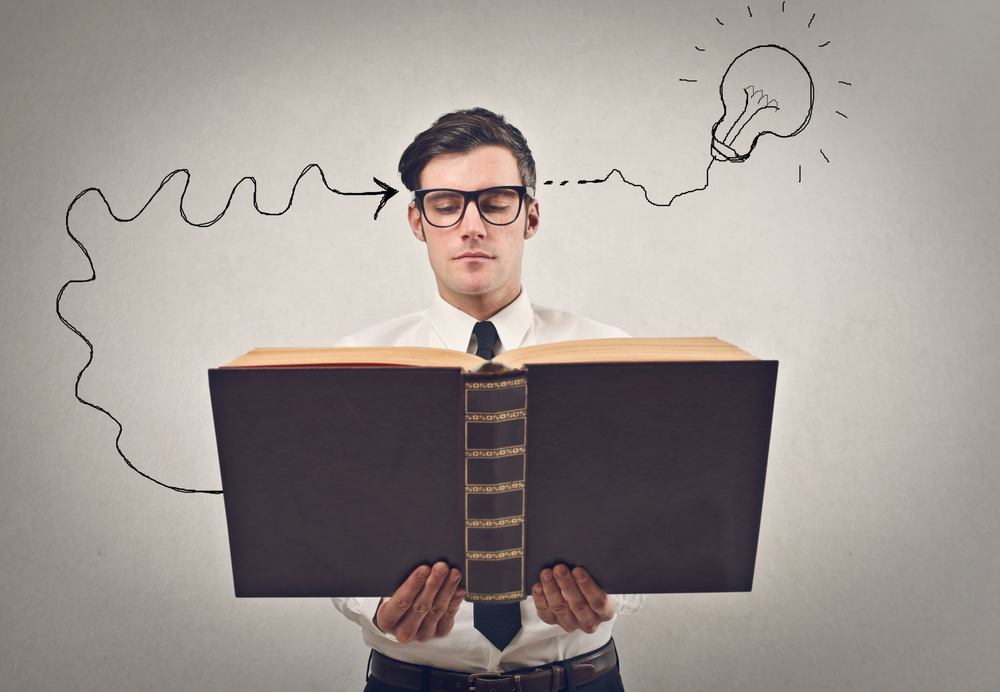
Breaking down pain
Let’s take it back to basics. We can break down types of pain into Acute and Chronic.
Acute pain: Just rolled your ankle running down a trail, or caught your arm on a hot pan? That’s acute pain. It tells us that we’ve just done something potentially harmful, or may have caused some damage to our bodies. This kind of pain is really useful! It forces a reaction to move away from the hot pan, or to stop running down that trail so we avoid any more damage and give ourselves a chance to heal! The pain goes away over a few days or weeks because there’s no more threat to the body, and the tissues have a chance to heal.
Chronic Pain: Technically we define this as a pain which has persisted for 3-6 months or more, but essentially, we recognize it as pain which persists longer than the necessary tissue healing time. We know that neurons (nerve cells) in the brain adapt and become much more efficient at carrying danger messages and therefore much more efficient at producing pain. We also know these neurons lose their ability to be specific. This means the pain is more easily triggered, but less informative. If you have been diagnosed with chronic pain you’re not alone: 20% of people worldwide are estimated to be affected.
So, what causes the shift from acute to chronic pain in some people?
There’s no definitive answer to this, but the short version is: almost anything can affect pain. It’s complex and multi-factorial. Nerves send danger messages to the brain the brain then checks with the sensory centre, emotional centre, motor centre, memory centre and many more before making a split-second decision on whether to give an output of pain – and how much. The brain then continues to update its assessment of the situation. Ever had an injury where you looked down and realised your bleeding? And then like flicking a switch the pain starts? That’s because the brain relies on context!

What can we do About it?
Researchers and health professionals are re-shaping the way we manage chronic pain. We now know that education, knowledge and understanding can physically change what’s going on in our brain, literally re-shaping the connections between these neurons!
Your practitioner can help with this! Our role is not just hands-on therapy, but to educate as well. Treatments which combine manual therapy with education, and specific movement-based strategies have been shown to be much more effective.
Essentially, we want to help change the way you think about chronic pain. We can recommend literature and other resources that are designed specifically for people with chronic pain, and develop a plan which includes techniques to decrease neurological sensitization.
References:
Moseley and Butler: EP supercharged
Monica Noy: www.monicanoy.com
The post Chronic Pain and the Brain appeared first on MetaMed.
]]>The post Tendinopathy Treatment – Overuse injuries and pain reduction appeared first on MetaMed.
]]>There are two common types of tendon injuries, tears/ruptures and overuse injuries known as tendinopathy. Tendinopathy is an umbrella term that encompasses a variety of reasons for tendon irritation. Research is being carried out on the best approach to treating tendinopathies, with new and improved treatment criteria being published all the time.
What is tendinopathy?
Tendinopathy (tendon injuries) occur when the tendon (the fibrous connective tissue that attaches your muscles to your bones) is unable to maintain the load being placed on it. It was originally believed that this caused inflammation. But we now know this isn’t the case. Instead, the tendon swells with oedema (clear fluid) and the nice, tidy, uniform collagen fibres in the tendon become ‘irregular’ causing failed attempts at healing.
Tendons are tough cookies. They can maintain tension for long periods and require much less oxygen that muscles. However, this also means they are frustratingly slow to heal, which means those with tendinopathy get frustrated. Why are they STILL not better?
What causes it?
The main risk factors are
1. Sudden change in activity, particularly those that require a load to be placed on the tendon (running, jumping, walking).
2. Compression on the tendon – think: pressure on your Achilles from shoes or falling on your knee and impacting your patella tendon.
3. Predisposition due to systemic factors such as high cholesterol, smoking, age.
4. Predisposition due to biomechanics such as poor muscle capacity/contraction or misalignment.
Symptoms
Symptoms will vary depending on the location, but in general, the tendon will be tender to touch, for example, an aggravated Achilles tendon will be painful when pinched, this is a sign of injury or irritation. Pain levels will increase with exercise, repetitive movements or increased use/load.
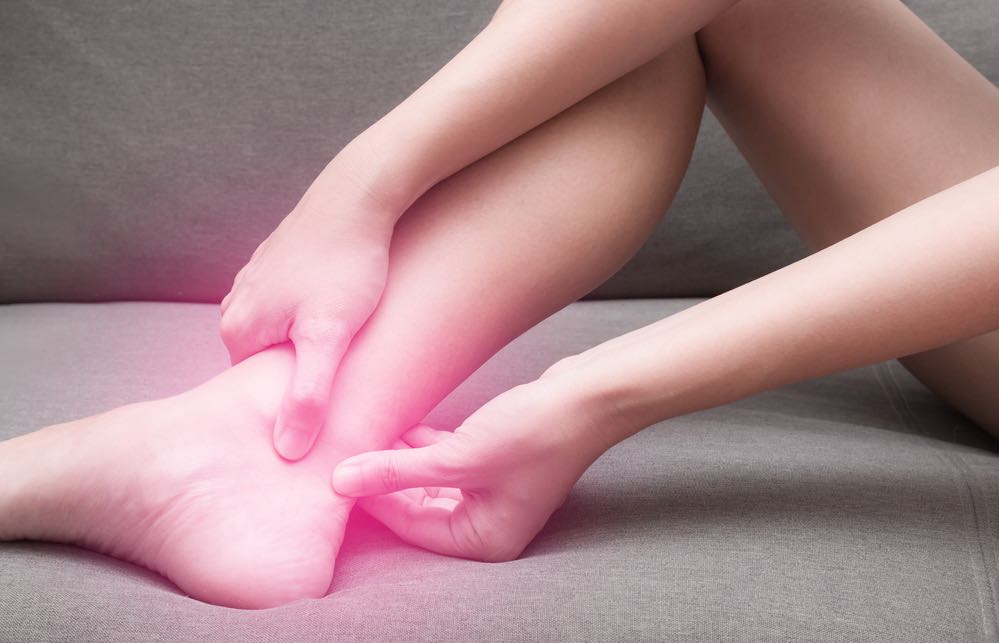
Types of tendinopathy
Stage 1 – Reactive: sudden increase in load or direct impact can cause the tendon to swell, thicken and become stiff – a natural protective response to reduce the stress being placed on the tendon. This is a relatively short-term stage and the best time to act as the structure of the tendon is intact and can return to normal. However, people commonly try to ‘push through the pain’ during this stage and don’t adapt their activity enough to allow sufficient healing. So we move on to stage 2.
Stage 2 – Dysrepair: occurs when the load is not decreased and the tendon has not returned to normal. The structure of the tendon begins to change, collagen separate and becomes disorganised, a sign of failed healing. However, during this stage it is still possible to heal the tendon and return to full strength
Stage 3 – Degenerative: The tendon has had multiple failed healing attempts and changes to the structure are irreversible. The tendon will be thickened and may have nodular, hard sections. This usually occurs in those that have continued to stress/load the tendon and older individuals with on-going tendon issues. The tendon is stiff and weak, predisposing to rupture as it has less capacity to adapt to the loads placed upon it.
Commonly affected areas
Shoulder
Rotator cuff and biceps tendons commonly cause pain in the front and side of the shoulder. The rotator cuff is made up of four different muscles, but one muscle is affected more frequently than others – the supraspinatus muscle. Tendinopathy of the supraspinatus muscle will cause pain and weakness when lifting your arm overhead, increased pain when sleeping and pain may travel down to your forearm/wrist/top of the hand. The biceps muscle often follows on from supraspinatus tendinopathy or if there is damage to the rotator cuff muscles. However, it can happen in isolation if there is repetitive heavy lifting. As such, the pain will intensify when lifting heavy objects.
In both cases, there may be an increase in popping and clicking of the shoulder joint due to increased fluid and swelling in the area.
Elbow
Technically known as medial epicondylitis (golfers elbow) or lateral epicondylitis (tennis elbow). It involves the tendons from your forearm muscles and where they attach at the inner or outer elbow. Despite the name, it is infrequently caused by golf or tennis! Commonly seen in sports/jobs that involve repetitive twisting of the wrist, computer use, vibration or heavy lifting. Symptoms include tenderness over the tendon, reduced grip strength, pain may radiate into the wrist and hand, painful resisted wrist extension/flexion.
Wrist
A common wrist tendon issue is De Quervain’s. De Quervain’s tenosynovitis is a little different from the other examples here as it involves the tendons of two small muscles in the forearm; the tendons are housed in a sheath that can get inflamed, preventing smooth gliding of the tendons as the muscles contract or the wrist bends. However, the cause is the same; repetitive use of the thumb with a sideways movement of the wrist. Overloading these tendons causes them to swell, reducing the space in the sheath, leading to pain and stiffness.
Hip
The gluteus muscles are a group of three muscles that make up your buttocks. Gluteal tendinopathy causes pain in the side of the hip and is common in runners and inactive people. Pain here can be caused and aggravated by sleeping on your side, sitting with legs crossed and running with a gait that crosses the midline on contact. Gluteal tendinopathy pain will increase slowly over time and will be accompanied by stiffness, however, range-of-motion should not be decreased.
Knee
The patellar tendon attaches your quadriceps to your knee cap and down to your shin bone. Patellar tendinopathy usually occurs in younger athletes (15-30yrs) who repetitively load the tendon through jumping, suddenly stopping or changing of direction. Sports such as basketball, tennis and football commonly cause patellar tendinopathy. The pain will be felt in the front of the knee, commonly below the kneecap.
Ankle – Achilles
Achilles tendinopathy can happen in two places, 1) where the tendon joins to the ankle, or 2) where the tendon turns to muscle (called the musculotendinous junction or MTJ). Achilles tendinopathy is hallmarked with morning pain that slowly gets better the more you walk around. This is because the tendon has to perform to full range of motion with basic movements such as standing and walking, stretching and irritating the tissue. Swelling will be minimal – however the affected tendon will be thicker in diameter and may have a painful nodule compared to the unaffected side.
Tendinopathy treatment
While the location of tendon injuries is variable, the approach to treatment is the same:
- Offload: Give the tendon a period of rest. Spend time stretching other muscles around it, but not the affected muscle/tendon. For example; rotator cuff tendinopathy could involve stretching the chest muscles (pec major/minor) and back muscles (latissimus dorsi) to encourage optimum shoulder positioning and movement.
- Gradually load: Eccentric exercises have proven results in helping the tendon to remodel and increase tolerance and strength. Eccentric exercises involve the muscle lengthening while contracting – eg: bicep curl in reverse. Progressing to weight/multidirectional/fast-twitch muscle fibre training. Your practitioner can help guide you with exercises for your specific injury.
- Movement/biomechanics: Changing the way we move works on the root cause of the problem and can help prevent recurrent injuries. For example, a runner's gait can have a big impact on how much the Achilles tendon is loaded.
- Manual therapy: Most importantly, an osteopath/physio can help guide you in the above approach to treatment. They can also provide you with some relief from pain and promote tissue healing through massage techniques and acupuncture – helping you to achieve your goals and get back to doing what you love.
- Other: Shock-wave therapy, laser therapy, platelet-rich plasma or corticosteroid injections – these modalities are all used in the treatment of tendinopathy with varying results. Your practitioner can explain them all and help refer if needed.
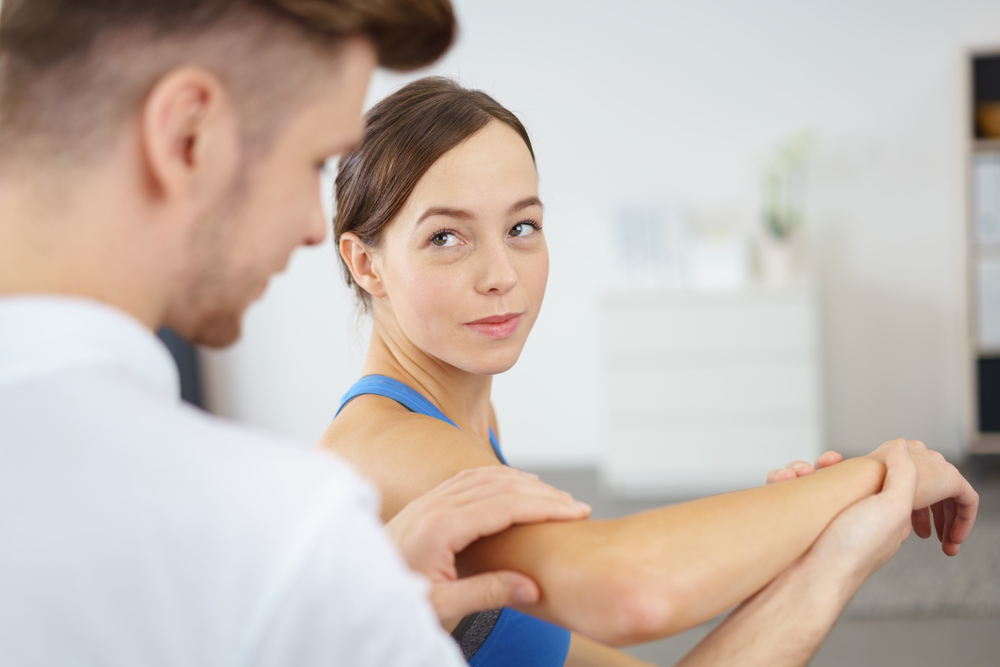
Summary
While we don’t know everything about tendinopathy treatments, here are some undeniable truths that every patient needs to keep in mind:
· Rest alone is not the answer. It may settle and reduce the pain in the interim but returning to activity is often painful again. This is because rest does nothing to increase tendon load tolerance.
· Tendinopathy is not considered to have a classic inflammation response. That being said, research has found that ibuprofen is helpful in the early stages to assist in tissue repair.
· Those with a predisposition to tendinopathy may find that even a subtle change will cause a flare-up, which will then take a long time to heal.
· Reducing the load initially to settle the pain is important. A short-term reduction in the aggravating movement/compression is required.
· Research has found that the best treatment for tendinopathy is exercise. Sorry people, but if you want to get better you will need to do the exercises you practitioner gives you. A lot. For longer than a week. Tendons need to be loaded slowly and progressively to increase their tolerance to load. In most cases, a tendon will continue to be painful and repetitively flare up if this crucial stage is missed.
· Similarly, tendinopathies rarely heal with passive treatments alone. By this I mean, just getting osteopathic treatments/injections/shockwave therapy/acupuncture will not fix your issue. In fact, multiple injections have been found to disrupt the healing process!
· Everyone is different. Everyone moves differently, places different strains on their body, has different predispositions, tolerates pain differently. Therefore, exercise needs to be individualised.
· As per our blog post on imaging: the diagnosis on imaging is not equal to the pain you feel. Some people have tears, tendinopathy, calcifications and are asymptomatic. For this reason, treatment focuses on your improving pain levels and function rather than sending you off for repetitive imaging to check on tissue healing.
· Most importantly, remember – Tendons heal slowly. They respond very slowly to exercise and you need to have patience. It may be tempting to resort to the ‘quick fix’ of an injection or surgery, but in reality, there is no easy way out. Put the time and effort in and you will feel better eventually.
References
(J. L. Cook, Rio, Purdam, & Docking, 2016; J. Cook & Purdam, 2012; Coombes, Bisset, & Vicenzino, 2010)
Cook, J. L., Rio, E., Purdam, C. R., & Docking, S. I. (2016). Revisiting the continuum model of tendon pathology: what is its merit in clinical practice and research? British Journal of Sports Medicine, 50(19), 1187–1191. https://doi.org/10.1136/bjsports-2015-095422
Cook, J., & Purdam, C. (2012). Is compressive load a factor in the development of tendinopathy? British Journal of Sports Medicine, 46(3), 163–168. https://doi.org/10.1136/bjsports-2011-090414
Coombes, B. K., Bisset, L., & Vicenzino, B. (2010). Efficacy and safety of corticosteroid injections and other injections for management of tendinopathy : a systematic review of randomised controlled trials. The Lancet, 376(9754), 1751–1767. https://doi.org/10.1016/S0140-6736(10)61160-9
Gattie, E., Cleland, J., & Snodgrass, S. (2017). The Effectiveness of Trigger Point Dry Needling for Musculoskeletal Conditions by Physical Therapists: A Systematic Review and Meta-analysis. Journal Of Orthopaedic & Sports Physical Therapy, 47(3), 133-149. doi: 10.2519/jospt.2017.7096
Liao, C., Xie, G., Tsauo, J., Chen, H., & Liou, T. (2018). Efficacy of extracorporeal shock wave therapy for knee tendinopathies and other soft tissue disorders: a meta-analysis of randomized controlled trials. BMC Musculoskeletal Disorders, 19(1). doi: 10.1186/s12891-018-2204-6
Miller, L., Parrish, W., Roides, B., & Bhattacharyya, S. (2017). Efficacy of platelet-rich plasma injections for symptomatic tendinopathy: Systematic review and meta-analysis of randomised injection-controlled trials. BMJ Open Sport & Exercise Medicine, 3(1), e000237. doi: 10.1136/bmjsem-2017-000237
Tumilty, S., Munn, J., McDonough, S., Hurley, D., Basford, J., & Baxter, G. (2010). Low Level Laser Treatment of Tendinopathy: A Systematic Review with Meta-analysis. Photomedicine And Laser Surgery, 28(1), 3-16. doi: 10.1089/pho.2008.2470
The post Tendinopathy Treatment – Overuse injuries and pain reduction appeared first on MetaMed.
]]>The post Imaging – Help or Hindrance? appeared first on MetaMed.
]]>Modern Day Medical Imaging.
Modern imaging techniques such as X-ray, ultrasound, MRI and CT Scans have the ability to show us anatomical structures in great detail. Since the inception of medical imaging, vast improvements have been made on clarity and availability; providing medical practitioners and patients with a clear diagnosis. A clear diagnosis can help to guide practitioners to give you a clear prognosis and management plan, whether this is a broken bone, internal bleeding, head trauma, or a tumour.
My Experience
After recently breaking my wrist (again) and going in for an x-ray, I realised that many would not be aware of the risk associated with x-ray and CT scans. Had I not known this already, I would be completely unaware that a single x-ray can increase your risk of cancer (1). CT scans are also problematic, with even higher levels of radiation. Areas such as arms and legs require a much lower radiation strength and therefore the risk is less. However, the spine or chest with its many layers of bone, muscle and organ require a higher strength scan, resulting in increased risk (1). Fortunately, ultrasound and MRI scans are safe. However, ultrasound cannot read bones, and MRI is very costly.

Hunting For A Diagnosis
When in pain, the desire to get a diagnosis is strong. For example, those with an old shoulder injury that just won’t heal will often go to their doctors pleading for an x-ray or ultrasound. Similarly, back pain can be debilitating and those suffering become desperate for an answer. However, you have to weigh up the pros and cons. What benefit will come from getting a diagnosis? Once you have a diagnosis – will your management options change?
Does Getting An Image Change Treatment?
Have you been diagnosed with shoulder impingement or tendinopathy? Have you been scanned, given the injection and in 8 weeks’ time the pain has come back? Here, the treatment you would receive from an Osteopath would be the same pre and post-scan/injection – the management doesn't change. Osteopaths use a variety of diagnostic tools including the same active tests a specialist would use, considering the injury cause and looking at your individualised anatomical makeup. In doing so we can diagnose and treat with great results and no unnecessary scans or injections required.
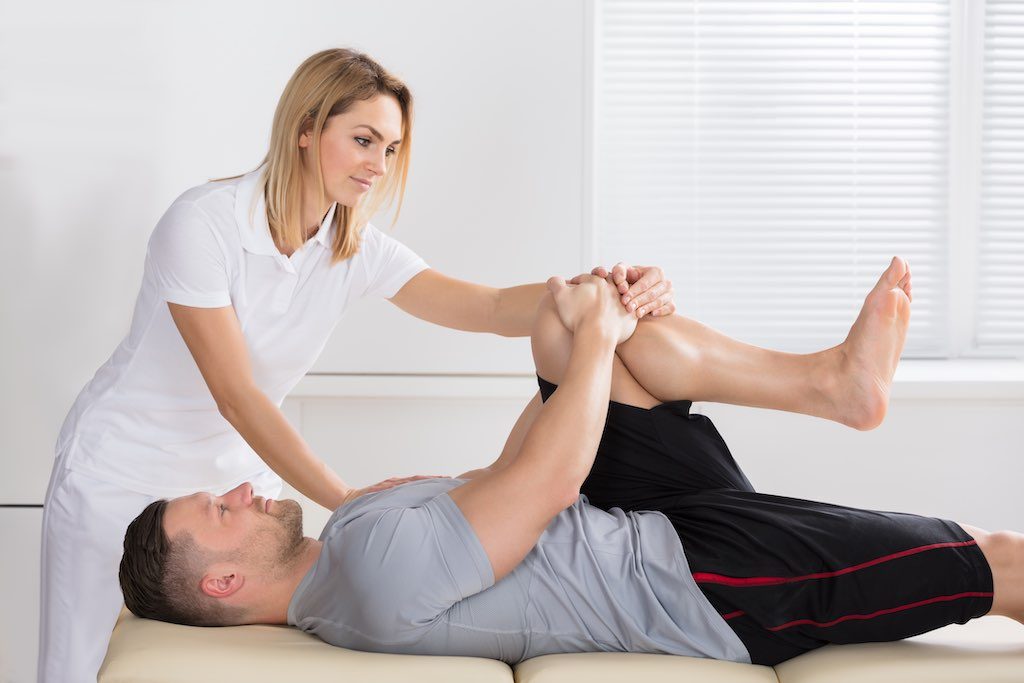
Here's An Example
The Conservative/Treatment Path
Shoulder pain or back pain are great examples of injuries that should be treated conservatively initially. ‘Conservative treatment’ includes seeing your local Osteopath, Acupuncturist or Physiotherapist for treatment, taking recommended supplements, attacking an exercise regime with focus by regularly doing the stretches provided.
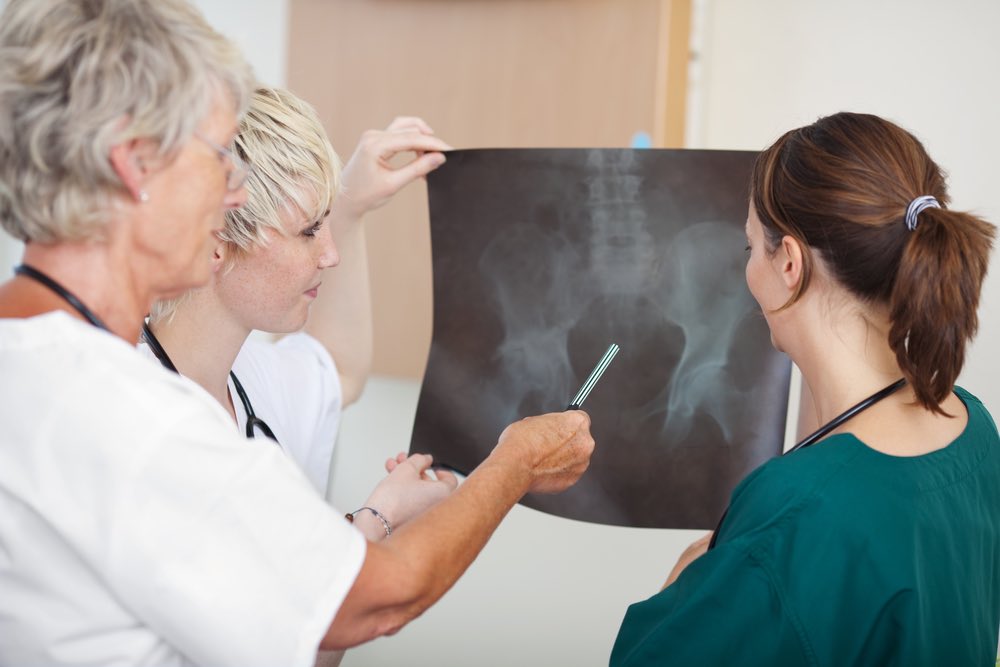
The Specialist Path
The non-conservative pathway is seeing a specialist, getting a scan and putting a name to your disorder. The specialist will likely recommend getting a corticosteroid injection, nerve block injection or having surgery. These treatment options are invasive, have varying results and don’t address the reason why the injury happened in the first place (2–4). Not to mention the side-effects of steroid injections; steroid injections have been found to slow healing in the tendon (5).
What The Studies Show
Over imaging is an endemic in healthcare. Studies have shown that unnecessary imaging and diagnosis hunting can lead to poorer health outcomes and higher levels of disability (6). There is growing evidence that pain has a strong association with stress levels, poor sleep, anxiety/depression and negative beliefs around pain. Indicating that all aspects of your life need to be addressed when treating pain – something we strive to do at MetaMed. We help guide you to de-stress, sleep better and become more trusting of your body and its strength, resulting in a more positive future outlook. We actively refer within the community to find you the right trainer/practitioner to support you back to feeling 100%.
To Sum It All Up
Getting a diagnosis from medical imaging is not the be-all and end all to your issue. Studies have shown that people who are pain-free often have ‘abnormal’ findings when given an MRI. In this study 91% had disc degeneration (loss of height in your spinal discs), 56% had disc bulges, 32% had disc protrusions and 38% had annular tears (the ligament around the spinal disc) (6). Yet these people all reported no back pain. Similarly, people with shoulder impingement, bursitis or tendinopathy often have similar if not worse findings on the unaffected side. When scanned, 95% of asymptomatic patients were found to have ‘abnormal’ findings in their shoulders (7). Which leads us to the conclusion that the pain you feel doesn’t necessarily correspond to the ‘abnormal’ findings that imaging may provide. In these cases, one may get little or short-lasting relief from nerve blocks, steroid injections or surgeries.
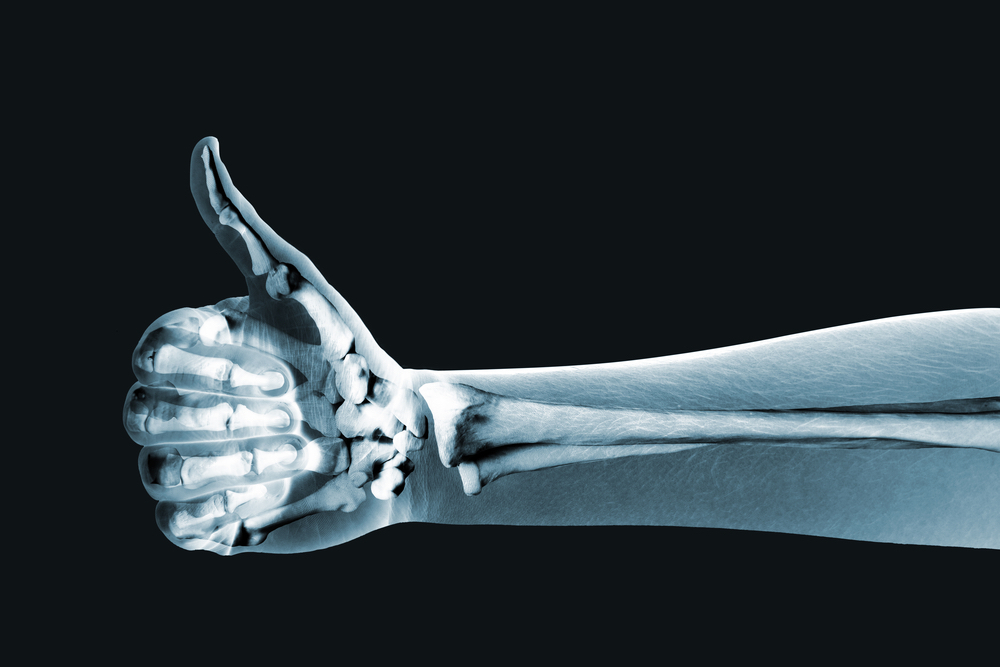
The main takeaway message here is before you go searching for a diagnosis, as it can have a negative impact on your health. Instead, give the conservative treatment a try. Focus on what combination of treatment/exercise makes you feel better. Radiological imaging should only be used when there are clear indications to do so and once conservative treatment options have been exhausted.
Written by Anna Burgess, Osteopath @ MetaMed · WANAKA
References
1. Harvard Medical School. Radiation risk from medical imaging – Harvard Health [Internet]. 2018 [cited 2019 Jan 30]. Available from: https://www.health.harvard.edu/cancer/radiation-risk-from-medical-imaging
2. Cook T, Minns Lowe C, Maybury M, Lewis JS. Are corticosteroid injections more beneficial than anaesthetic injections alone in the management of rotator cuff-related shoulder pain? A systematic review. Br J Sports Med [Internet]. 2018 Apr 1 [cited 2019 Jan 30];52(8):497–504. Available from: http://www.ncbi.nlm.nih.gov/pubmed/29305377
3. Carofino B, Chowaniec DM, McCarthy MB, Bradley JP, Delaronde S, Beitzel K, et al. Corticosteroids and local anesthetics decrease positive effects of platelet-rich plasma: an in vitro study on human tendon cells. Arthroscopy [Internet]. 2012 May [cited 2019 Jan 30];28(5):711–9. Available from: http://www.ncbi.nlm.nih.gov/pubmed/22264830
4. Jordan JL, Konstantinou K, O’Dowd J. Herniated lumbar disc: injection interventions for sciatica. BMJ Clin Evid [Internet]. 2016 [cited 2019 Jan 30];1118. Available from: https://www.ncbi.nlm.nih.gov/pmc/articles/PMC4747321/
5. Coombes BK, Bisset L, Vicenzino B. Efficacy and safety of corticosteroid injections and other injections for management of tendinopathy : a systematic review of randomised controlled trials. Lancet [Internet]. 2010;376(9754):1751–67. Available from: http://dx.doi.org/10.1016/S0140-6736(10)61160-9
6. O’Sullivan P, Lin I. Acute low back pain: Beyond drug therapies. Pain Manag Todayanagement Today. 2014;1(1):8–13.
7. Girish G, Lobo LG, Jacobson JA, Morag Y, Miller B, Jamadar DA. Ultrasound of the Shoulder: Asymptomatic Findings in Men. Am J Roentgenol [Internet]. 2011 Oct 20 [cited 2019 Jan 31];197(4):W713–9. Available from: http://www.ajronline.org/doi/10.2214/AJR.11.6971
The post Imaging – Help or Hindrance? appeared first on MetaMed.
]]>The post Water Purifier Guide: The Benefits of Filtered Water appeared first on MetaMed.
]]>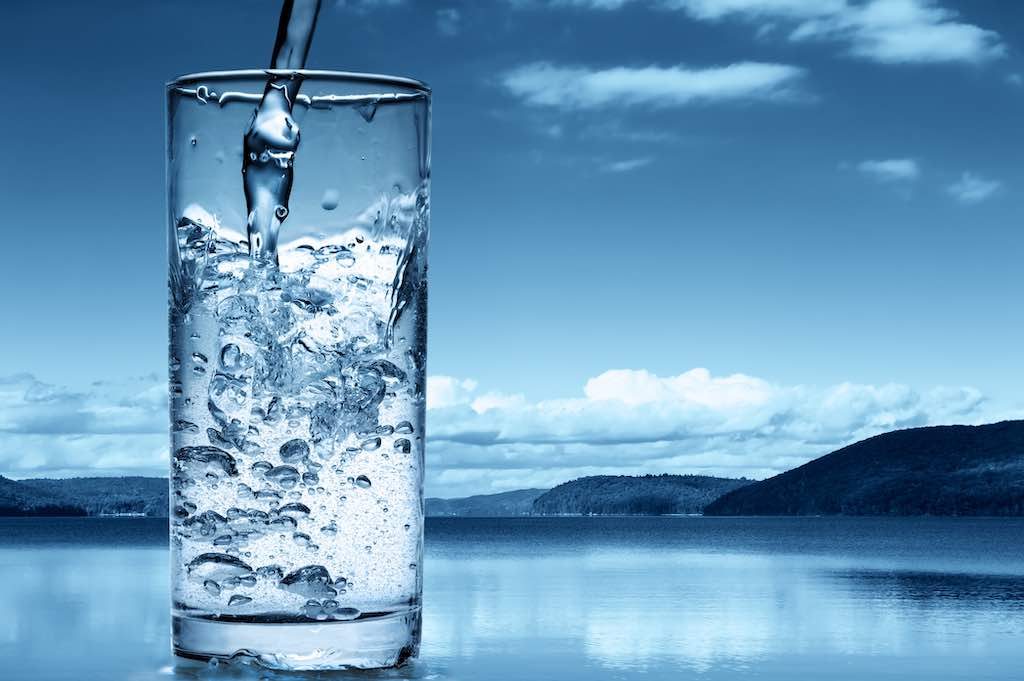
It makes up between 50-60% of your body and is vital to so many biochemical functions that you simply can’t live without it. What am I talking about? WATER of course.
Despite the importance of this vital compound, which supports all living organisms, most people take where it comes from, and its implications for their health, somewhat for granted. If you’ve ever wondered what’s in your water, then what follows will most definitely be of interest.
In addition to keeping you hydrated and playing a role in a wide range of metabolic functions, the water we drink also has the potential to provide us with a number of both beneficial and harmful minerals and contaminants.
The water which comes from your tap often contains many of the minerals which are important to your health, such as calcium, magnesium, sodium and potassium. They are, however, often in ineffectual quantities, and alongside higher levels of contaminants such as chlorine and fluoride which are added to public supplies of water as a disinfectant and to reduce dental decay respectively.
Water Filter Benefits
As a result of some of the concerns surrounding the health implications of consuming the recommended 2-3 litres of water a day from your tap, the use of water filters, and the purported benefits of doing so, have been widely advertised.
Health benefits:
The vast majority of the positives associated with drinking filtered, as opposed tap water, revolve around the removal of potentially harmful compounds in the filtering process.
The removal of harmful contaminants:
- The filtering of fluoride and chlorine from your water can help to reduce the risk of life threatening diseases such as rectal, colon and bladder cancer.
- The removal of arsenic, which is a natural component of the earth’s crust, and therefore found in water, can help reduce the risk of a number of cancers associated with its carcinogenic properties.
- Aluminum is used in water treatment in order to remove microorganisms and impurities which can cause disease. Unfortunately, in high quantities it can also increase the risk of Alzheimer's disease, learning disabilities in children, skin problems and liver disease. Water filters help to remove aluminum.
- Tap water has also be shown to contain the presence of a number of other inorganic minerals associated with increased risk of arthritis, kidney and gallstones, diabetes and obesity.

Nutrient absorption and hydration:
Filtered water can also increase the rate at which water molecules and nutrients are absorbed by our cells, improving metabolism and overall health.
In addition, studies have demonstrated that the availability of filtered water increases a families water consumption markedly. Given that very few people consistently maintain good levels of hydration, and because good hydration is so important for so many of the biochemical processes within your body, this can only be a good thing.

Good for cooking:
- Because we regularly use water in our cooking, harmful compounds such as chlorine can often find their way into our food too. Using filtered water in the kitchen is a great way of avoiding this.
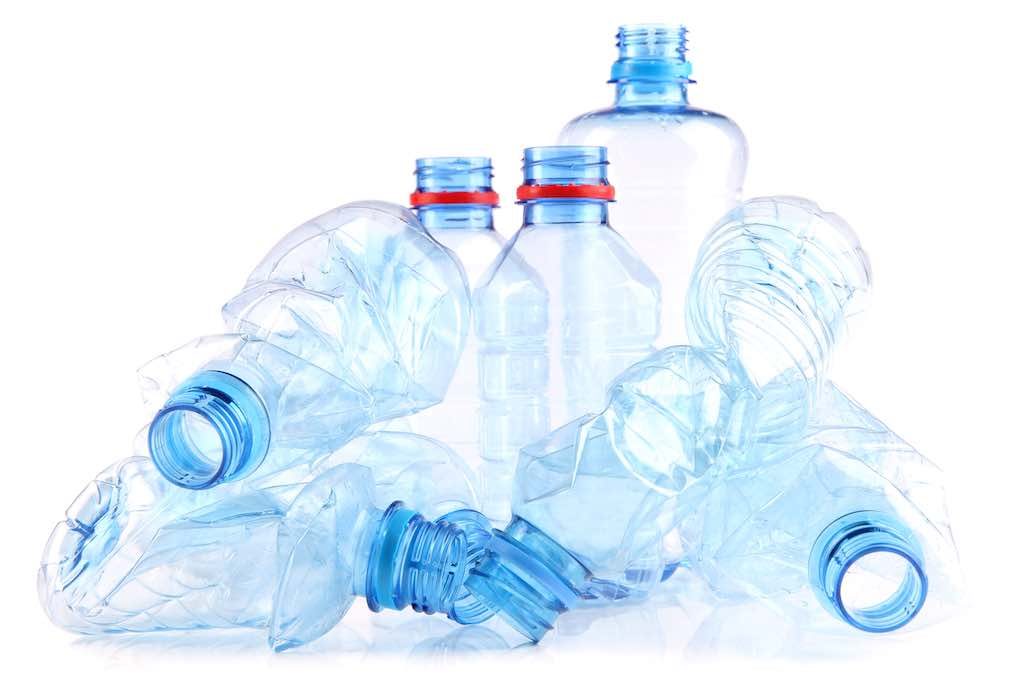
Environmental benefits:
How many people do you know who choose bottled water as an alternative to the stuff that comes out of their tap. Whilst this may negate some of the issues regarding harmful contaminants, it presents a whole load of other potential problems, not least in relation to the environment.
The vast majority of bottled water is packaged in plastic bottles. What is one of the most serious environmental issues facing humankind right now?! Plastic waste.
The negatives of bottled water don’t stop at the environment either. The water within them can also be incredibly damaging to your health. Studies have demonstrated that water contained within plastic bottles can contain harmful traces of hormonal type chemicals known as estrogens, which are linked with breast cancer in women and prostate cancer in men.
In addition, a study in Europe found that 92% of 250 bottles of water tested in 2018 contained microplastics, with those contaminated bottles containing on average 314.6 plastic particles per litre.
New Zealand is making moves to improve the environment introducing the ban of single-use plastic bags. When will plastic drink bottles be next?
So, by trading plastic bottled water for a water purifier at home, not only are you helping to reduce plastic waste, which is one of the biggest human induced scourges on earth, but you are also looking after the health of you and your family.
How do water purifiers work?
There are a number of different ways in which water can be filtered, all with the ultimate aim of producing water free of harmful contaminants.
- Activated Alumina:
This method uses aluminum oxide in an effort to remove fluoride, arsenic and selenium from tap water. It is both highly effective and cost efficient but it can lead to aluminum leaching into your water supply.
- Activated Carbon:
Activated carbon is carbon treated in order to maximise the pores available to trap potential contaminants. It is particularly effective at removing organic compounds and chlorine from water due to the large surface area available for absorption.
This method is generally considered inexpensive and does not require the use of electricity.
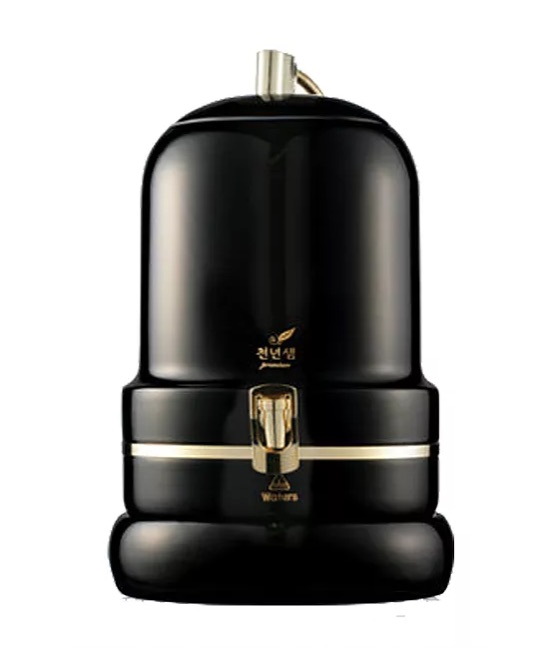
- Ceramic filters:
Ceramic filters work in a very similar way to activated carbon, trapping contaminants in lots of small pores. This method is most effective at reducing bacteria and protozoa but does not necessarily remove chemical contaminants.
- Reverse osmosis filter:
This method works by forcing water through a semipermeable membrane which filters out any harmful chemicals. This is a very effective way of removing heavy metals and other contaminants from your water supply but it is a significant investment and takes up a fair amount of space.
- UV water purifier:
Using high frequency light, all living microorganisms are destroyed as water passes through a glass element. This process does not, however, remove contaminants or minerals such as fluoride. It is also very expensive and requires energy to function.
- Water distillation:
Probably the most effective of all water purifier processes, distillation involves boiling, cooling and condensing water in order to remove contaminants and bacteria, whilst improving taste and smell. Unfortunately it is also probably the slowest method on our list and requires electricity to achieve plus it LACKS nutrients and doesn't alkalise the water.

Some of the best water filter options for you
There are a range of products available which can help you to filter the water that comes from your tap at home or in the workplace, each of which make use of some of the techniques we have discussed above. The right choice for you depends on a number of factors, including: the biochemical properties of your water; water pressure and budget.
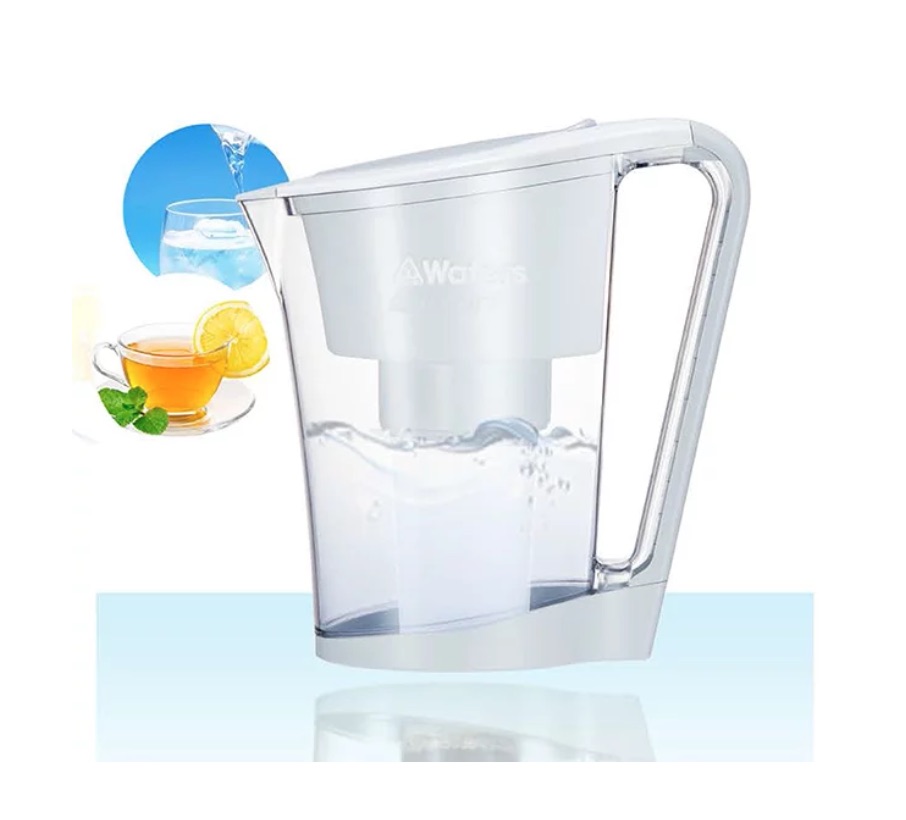
- Water filter pitcher:
Probably the most common and cost effective method of filtering water at home, this is essentially a jug in which water is passed through activated carbon.
The only downside is that these pitchers tend to have a small capacity (approximately 2 litres) and they take a long time to do their business.
- Faucet water filter:
Attached directly to your tap, most faucet water filters also make use of activated carbon. This is another relatively inexpensive water purifier solution, removing contaminants such as chlorine as well as heavy metals such as lead and mercury.
Whilst they deliver filtered water more quickly than a pitcher, faucet filters do tend to slow water flow down significantly.
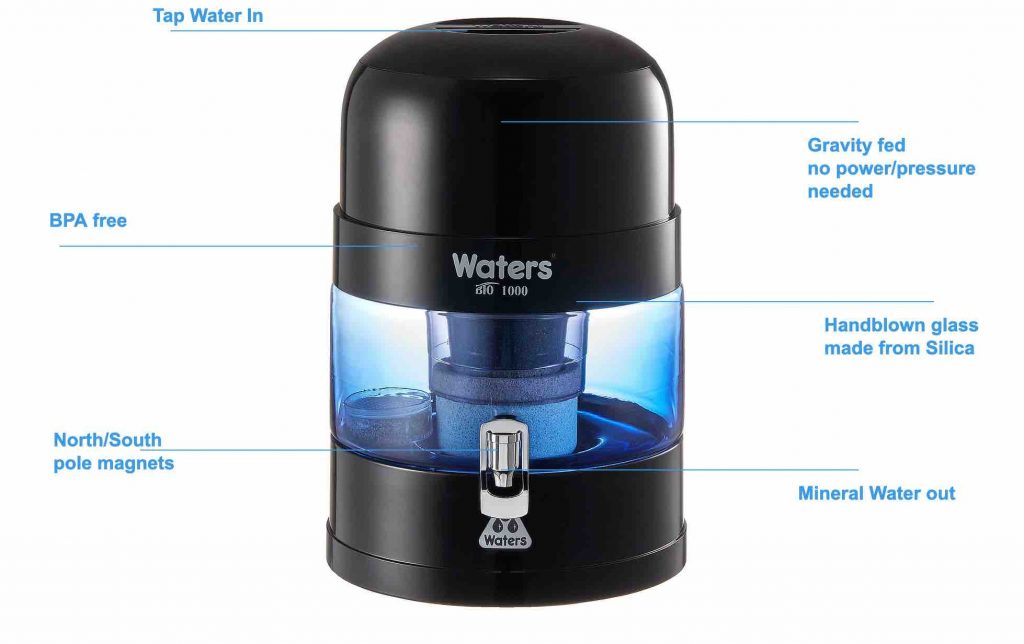
- Countertop water filter:
We think that these are the best! A device that connects to your tap and simply sits on top of your kitchen counter. These tend to make use of either activated carbon or ceramic filters and are particularly handy because they are portable if you want to take them between holiday homes or to events.
These are a great option if you want to filter your tap water without having to constantly fill a pitcher. The Bio1000 is as good a choice as any product when it comes to a countertop at home water purifier. The volume of these filters range from 5-10 litres.
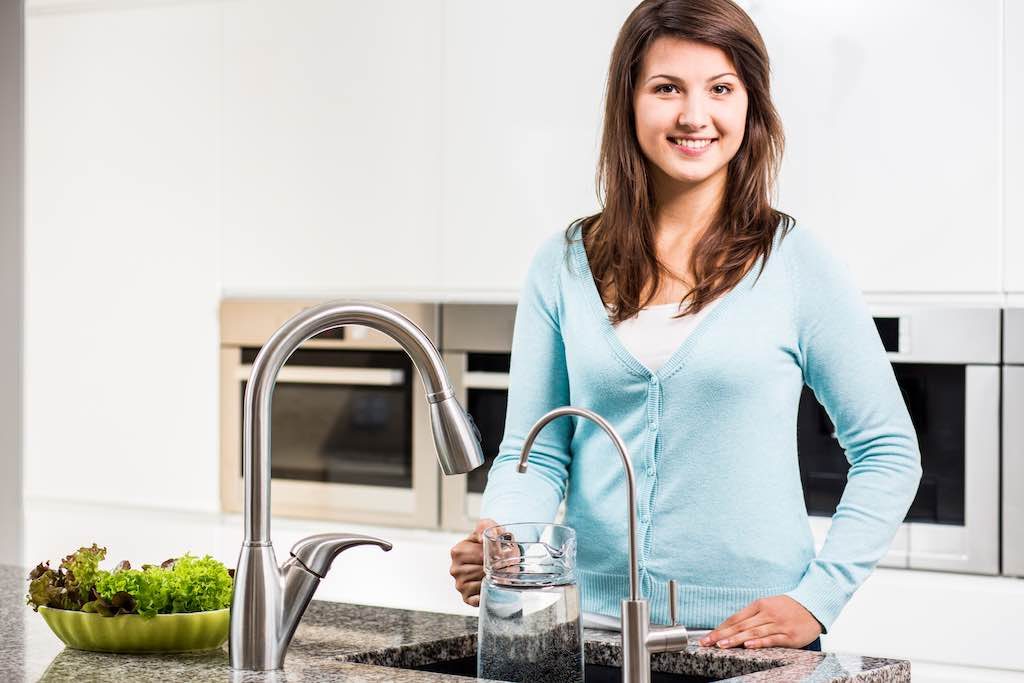
- Undersink filter:
installed under you sink, as the name suggests, these are usually large, expensive and obviously not portable like the Bio1000 countertop water filter. They are, however, capable of filtering a much larger amount of water at a much quicker speed than the other options already discussed.
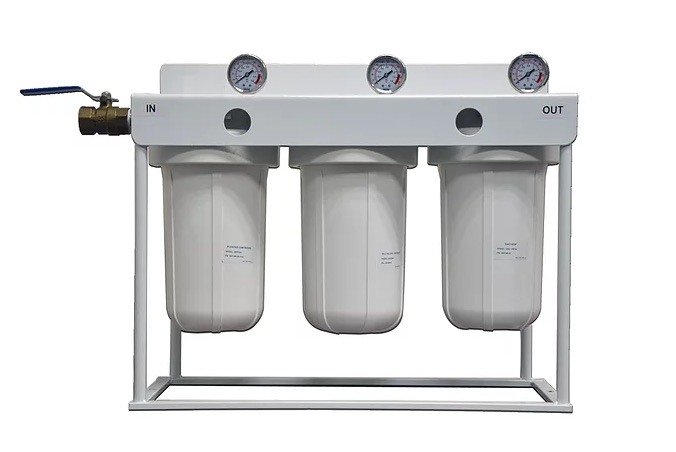
- Entire house system:
These are typically installed at the water tank which means that water is filtered before it even reaches your home and is distributed accordingly. Much like the undersink option, it is expensive but incredibly effective. Not great if you're renting though!
As you can see, the benefits of a water purifier in comparison to bottled water and regular tap water are broad and varied. Not only does a home water purifier negate some of the potential health implications of contaminants and chemicals found in tap water and bottled water, it also ticks a number of important environmental boxes.
Whilst there are clearly a number of different and effective options available on the market, the best water filtration system when it comes to efficiency, cost and portability is undoubtedly the countertop water filter.
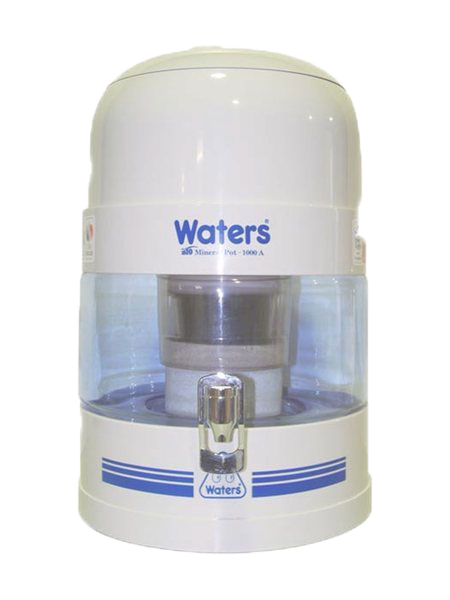
The Bio 1000 is a bench top filter system with massive 10 Litre Capacity storage.
Delivers instant drinking water that not only tastes great but is cleaner and healthier than standard tap water or many bottled water source.
The Bio 1000 produces water at an alkaline pH of between 8.5 and 9.5. Alkaline water helps to combat the acidity (from stress, the environment, and food) in our bodies.
The Bio 1000's reservoir is 100% BPA free so you don't have to worry about industrial plastic chemicals leaching into your water (common with other forms of water storage)
Remove up to 99.9% of nasty chlorine in the water supply with powerful filters.
The post Water Purifier Guide: The Benefits of Filtered Water appeared first on MetaMed.
]]>The post Do You Need a Gallbladder Flush? appeared first on MetaMed.
]]>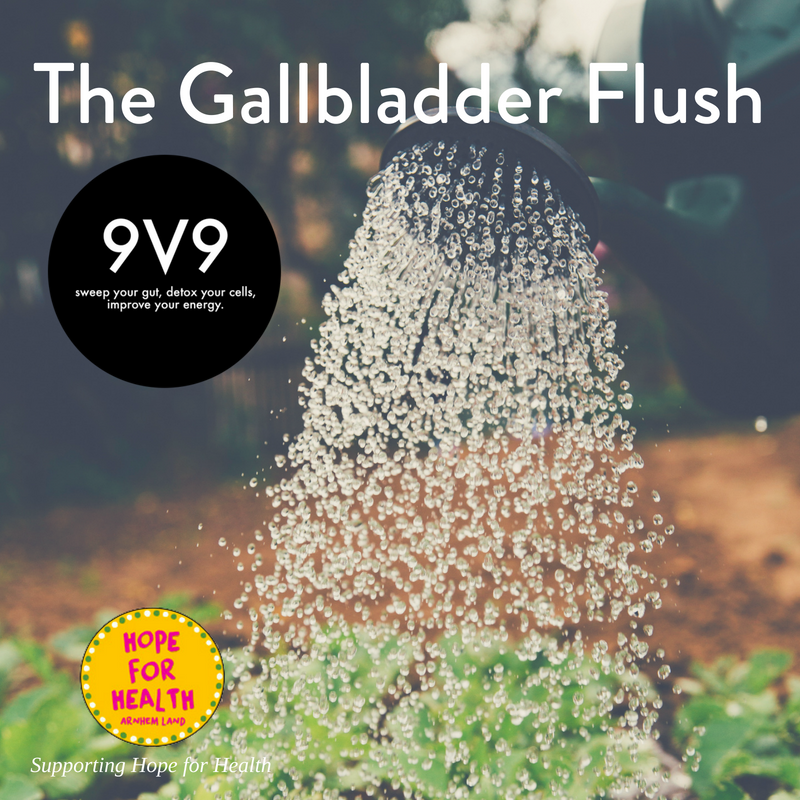
Join Australia's leading Naturopath and Complete Gut Health Cook book co-author Helen Padarin on the guided gallbladder flush + 9v9. Click here to enroll.
Two Options Available
9v9 is an online challenge with support from an active group and Helen Padarin to eat 9 cups of veggies for 9 days. You'll get access to beautiful seasonal recipes on how to get 9 cups in a day! This challenge can be done by itself…
or if you're after something a bit more…
You can go for the Gallbladder Flush which is teamed up with 9v9 (9v9 will be included for free with the Gallbladder Flush) to prep you for the flush weekend. Read on to find out more.
Why a Gallbladder Flush?
Your gallbladder is one of your digestive organs, it stores bile from your liver and secretes it into the bowel when fatty foods are eaten. Bile helps to digest fats. Now not everyone has a gallbladder, it may have been removed. The gallbladder flush is intended to keep your gallbladder healthy, functioning and your digestion at its optimum.
Physical Signs Your Gallbladder May Need Help
- Tired
- Skin issues- rashes, acne, sallow skin
- Constipation
- Gut discomfort after eating fatty or greasy foods
Emotions and your gallbladder
In Chinese medicine, the organs can tell you a lot. Not only do they have a function in the body but also your emotions.
Emotions of a free-flowing, healthy gallbladder:
- Clear direction
- Assertive
- Inspired
- Happy
- Passionate
Some signs that your gallbladder may be in need of some help:
- Difficulties making decisions and planning
- Feeling shy
- Unmotivated
- Tired
- Lack of follow through
- Inability to take action
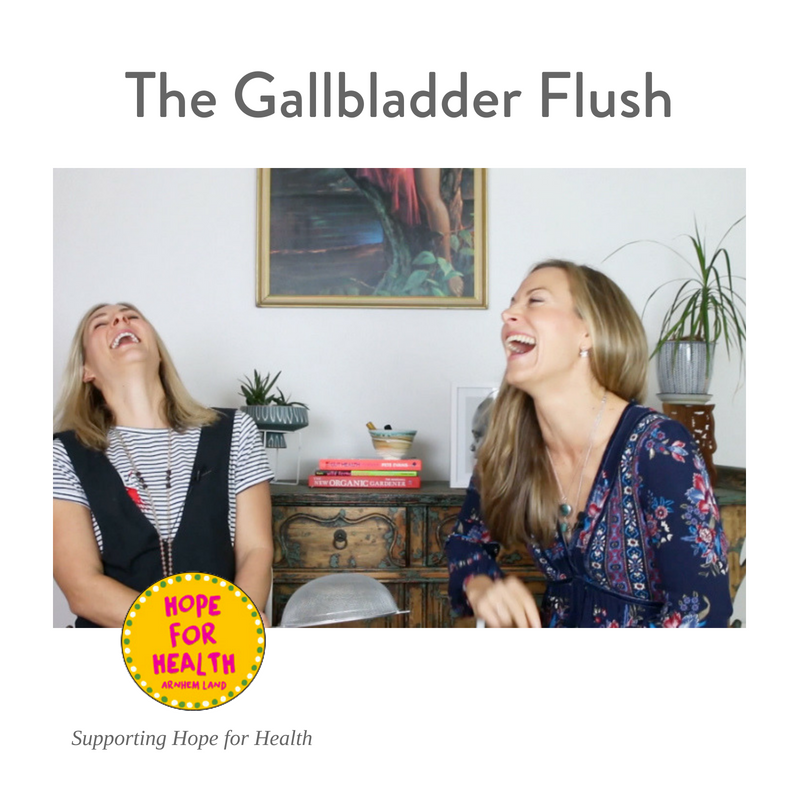
Who's behind this online course?
Some of you may have heard of Helen Padarin- Naturopath, Nutritionist & Herbalist from Sydney, Australia. She's a wealth of knowledge and also co-author of The Complete Gut Health Cookbook with Pete Evans. To help more people than just the ones she sees in her clinic room she developed an online course called 9V9 . This month she's just launched the Gallbladder Flush + 9v9 for FREE!
Starts Monday 13th May 2019. Enrolments open until 12th May 2019. Click here to enroll.
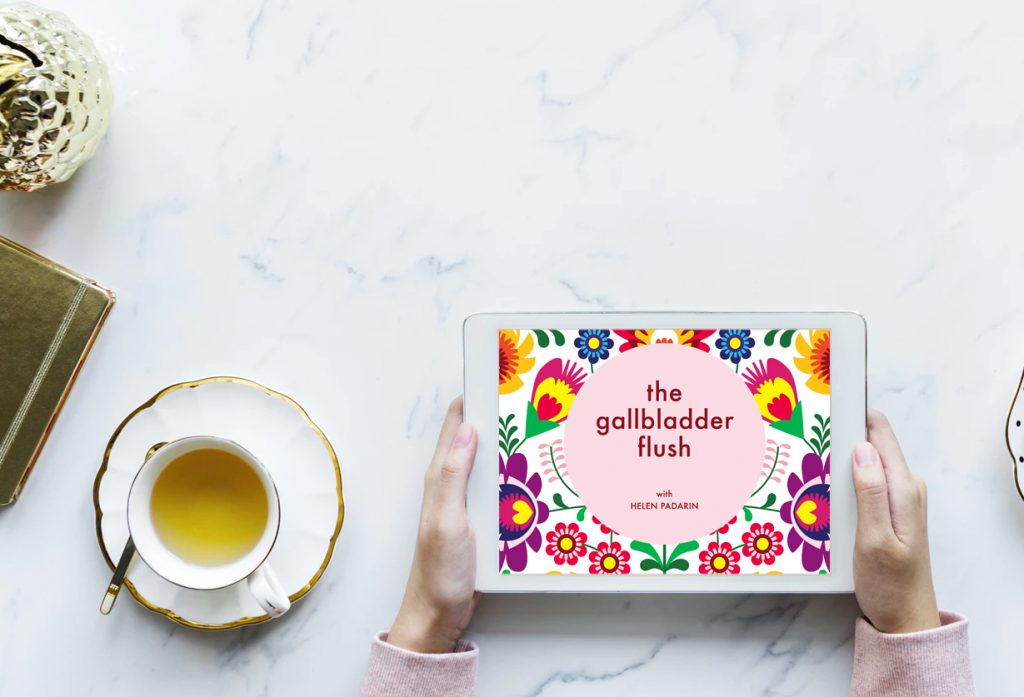
What's included?
Did you know that when you sign up for The Gallbladder Flush with Helen, that as part of preparation month you are going to receive the entire 9V9 Veggie Challenge for FREE?
The course will run for one month starting with the 9v9 challenge. Nine cups of veggies for nine days. The whole course comes with an amazing recipe book with great ideas of how to get your nine cups of veggies in a day. You'll be sure to use them beyond this course. Plus live chats on Facebook with Helen Padarin and support from Alice Nicholls from The Whole Daily Then on June 7-8 you'll be ready to go through the gallbladder flush.
All recipes for 9v9 have been revamped and refined. If you don't want to do the whole flush you can sign up for 9v9 on it's own to get a taster. Click here for 9v9 only.
Alice Nicholls from The Whole Daily will also be part of the challenge to support you along the way. These are some of the super simple and yet, incredibly delicious Winter 9V9 recipe images. Helen Padarin and Alice Nicholls got together and cooked their way through a mountain of veg so that they could deliver you an epic and tummy-warming update to best-selling 9V9 Veggie Challenge Program.
How Does it Work?
We know that your body needs to be in the best shape to do The Gallbladder Flush. And there ain't no better way to start to shift those toxins, detox your cells and start the body regaining vitality than to flush it full of Mother Nature created anti-oxidants, phytonutrients, and fiber.
By the end of this nine-day veggie detox in The Gallbladder Flush Prep month, you’ll be shocked at how easy it can be to feel happy, healthy and confident. You'll have guidance with Helen along the way, Facebook Live chats and Q&A as well guidance during the overnight gallbladder cleanse which takes place on 7-8th June.
Please click on links for more details as this program is not suitable for everyone.
Do I Have to Change My Lifestyle Drastically?
So sign up for the gallbladder flush and you'll get the 9v9 challenge for free. Or if it's not quite for you just sign up to be part of the 9v9 challenge for nine days. You don't need to change anything else in your diet or lifestyle, just eat 9 cups of veggies for 9 days!
If you are taking part in the gallbladder flush and need access to teas and supplements to assist you can order them online from MetaMed.store and have the delivered to you anywhere in NZ.

What You Can Expect
- Your digestive system to function better.
- Your energy and confidence to improve.
- Your immune system to be given a reboot.
- To learn new tasty tricks to cooking vegetables (you’ll be craving them by the end).
- Bucket loads of compliments on your new glow!
- This program is designed to give you the get you started on a new path and on track to heal your health – for good!
Come and join The Gallbladder Flush NOW & get ready to experience a healthier, happier life!
Enrolments end Sunday 12th of May for a Monday 14th May start.
The post Do You Need a Gallbladder Flush? appeared first on MetaMed.
]]>The post 5 Tips to Prevent Headaches and Migraines appeared first on MetaMed.
]]>Headaches and migraines aren't just a pain in the head. They're a pain in the butt. Suffering from daily, weekly or even random headaches can significantly interfere with your day and ability to do simple tasks.

Headaches and Migraines Can Affect Your:
- Ability to work
- Focus
- Decision making
- Ability to look after your kids
Although headaches and migraines are slightly different (see our post on Migraines) there are some basic tips to help prevent and manage them.

Top 5 Tips to Prevent Headaches and Migraines:
- Keep your hydration up. Drinking at least 2 litres of water per day. If you have difficulty drinking water you can try sparkling water, a squeeze of lemon, or drinking non-caffeinated herbal teas. Herbal teas are a great option during the cooler months. Try peppermint, berry teas or relaxing blends. Avoid sweetened drinks, soft drinks or energy drinks.
- Eat regular and small healthy snacks and meals. This helps to keep your blood sugar levels up and help sustain energy. Keep sugar content down in your snacks and meals to avoid a sugar crash and tiredness later. High-fat snacks such as avocado, salmon, nuts. It is also a good idea to identify if you have any particular foods that trigger headaches or migraines and avoid these.
- Regulate your sleep and wake times (read our blog post on Benefits of Regulating Your Sleep Cycle). Sleep is an important part of winding down from your day and repairing from any stressors you may have encountered. Try and go to bed by 10pm and avoid screen time for 30- 60 minutes before bed.
- Stress relief. Finding ways to let go of daily stress helps relieve muscle tension and wind down for a peaceful nights sleep. Meditation is one way. Going to a yoga or exercise class is another. If you have difficulty meditating there are guided meditation apps with some great sleep stories, such as Calm App.
- Magnesium supplements are great for relaxing muscle tension and calming your nervous system and can aid with reducing frequency and intensity of headaches and migraines. Read more about Magnesium types and doses here.
We are here to help
The post 5 Tips to Prevent Headaches and Migraines appeared first on MetaMed.
]]>The post 9V9 Challenge May 2019 appeared first on MetaMed.
]]>
An Easy Detox
You don't need to take anything away from your diet or lifestyle just add more veggies into your day!
Want more energy? Glowing skin? Healthy Bowel movements?
Who's behind this online course?
Some of you may have heard of Helen Padarin- Naturopath, Nutritionist & Herbalist from Sydney Australia. She came and spoke in Wanaka at our recent Wise & Well event in March (her talk will be posted soon). She's a wealth of knowledge and also co-author of The Complete Gut Health Cookbook with Pete Evans. To help more people than just the ones she sees in her clinic room she developed an online course called 9V9.
Starts Monday 13th May. Enrolments open until 12th May 2019
What's included?
The 9v9 challenge. Nine cups of veggies for nine days. The whole course comes with an amazing recipe book with great ideas of how to get your nine cups of veggies in a day. You'll be sure to use them beyond this course. Plus live chats on Facebook with Helen Padarin and support from the super enthusiastic Alice Nicholls.
All recipes for 9v9 have been revamped and refined.



Alice Nicholls from The Whole Daily will also be part of the challenge to support you along the way. These are some of the super simple and yet, incredibly delicious Winter 9V9 recipe images. Helen Padarin and Alice Nicholls got together and cooked their way through a mountain of veg so that they could deliver you an epic and tummy-warming update to best-selling 9V9 Veggie Challenge Program.
Did you know that when you upgrade and sign up for The Gallbladder Flush with Helen, that as part of preparation month you are going to receive the entire 9V9 Veggie Challenge for FREE?
By the end of this nine-day veggie detox you’ll be shocked at how easy it can be to feel happy, healthy and confident.
You can expect:
- Your digestive system to function better.
- Your energy and confidence to improve.
- Your immune system to be given a reboot.
- To learn new tasty tricks to cooking vegetables (you’ll be craving them by the end).
- Bucket loads of compliments on your new glow!
- This program is designed to give you the get you started on a new path and on track to heal your health – for good!
Come and join 9v9 & get ready to experience a healthier, happier life!
The post 9V9 Challenge May 2019 appeared first on MetaMed.
]]>The post How To Sleep Better – Secrets To A Good Night’s Rest appeared first on MetaMed.
]]>If you were to live to 75 years old you would have spent an average of 25 years asleep or 9000 + hours.
Being busy and not having enough time is a common complaint. Why sleep when you can be up late and be productive?
Circadian Rhythms
Humans have intricate bodies and physiology that innately know what to do. We have what is called a circadian rhythm that determines when we sleep and when we eat, body temperature, blood sugar levels, cell repair and much more. This is governed by the natural fluctuation of hormones particularly cortisol and melatonin and is heavily influenced by our lifestyle and external factors such as sunlight and temperature.
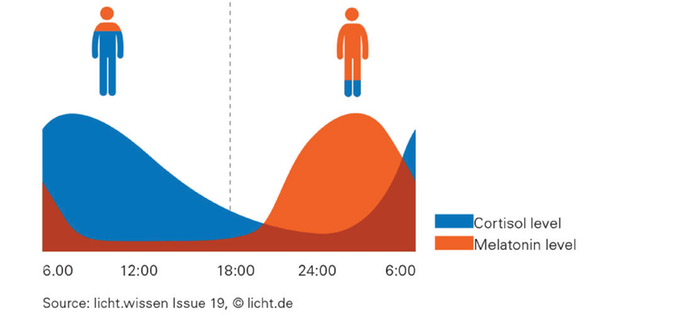
Melatonin
Melatonin is our sleep hormone and is manufactured in the pineal gland in the brain. Its levels tend to increase when the sun goes down peaking at around 9-10 pm. It's usually when a wave of tiredness hits us drawing us to the comfort of our bed. Levels of this hormone stay in your system generally until the sun comes up and light enters your room. Sunlight and the blue light in particular from the sun's rays break down melatonin. During the day melatonin is generally not detectable in the body.
Cortisol
Melatonin's opposite is cortisol. This hormone is produced by the adrenal glands that sit on top of the kidneys. Cortisol is also known as the ‘stress hormone' when the body creates it in excess. We all need some cortisol. At normal levels, it is healthy and necessary. In relation to our circadian rhythm, it helps us stay awake and alert. Cortisol levels start to rise early morning as melatonin drops causing you to wake. It peaks around 8 am and you are generally at your best cognitive function around 10 am. Levels slowly decline throughout the day with cortisol levels lowest at around 3 am.
What are the benefits of sleep?
Hopefully, you can remember a time when you had ‘the best night's sleep' where you slept like a log through the whole night and woke in the morning naturally, energised and ready to go into the day ahead. A great night's sleep doesn't just make you look good it's essential for a healthy body.
- Repair: sleep is when our body repairs from any minor traumas, deals with inflammation and viruses and restores cells
- Mood: more emotional stability, fewer tears, grumpiness, impatience and mood swings
- Memory: cortisol plays a role in memory formation so having these levels fluctuate at the right time is important
- Control inflammation: chronic inflammation is associated with a higher rate of heart disease, stroke, diabetes, arthritis and premature ageing
- Increased productivity: cortisol levels peak at 10 am meaning this is when you function the best. A good nights sleep also helps your learning capacity and ability to meet deadlines
- Weight: remember the circadian rhythm helps us decide when to eat and sleep. If you are sleep deprived your hunger signals may be out of whack causing you to eat more and lack of energy can lead you to make poor food choices
- Stress: as above having a good nights sleep helps modulate certain hormones, helping us to balance emotional responses including stress and anxiety levels
So you realise that you're not really functioning at your optimum. You're stressed, you feel tired, forgetful and moody. I suggest you try to get your sleep hygiene dialled in for starters. You have to sleep every day and now you know how important it is it's a good thing to learn how to do it well. Let me introduce you to sleep hygiene.

Sleep Hygiene Tips – how to regulate your sleep-wake cycle.
Sleep hygiene involves practices and routines to help you achieve a good night's sleep and an energy-charged day.
The amount of sleep required varies from children to the elderly. We'll focus on the general adult.
The Bedroom is for sleep and sex
Nothing else. Make sure your room is neat and tidy and a place you want to retire for the night. No distractions like the TV, your phone, or reading material. Turn WiFI off and keep your phone out of your room at night. If you use it for an alarm, buy an alarm clock. Your sleep environment is one of the most important factors in getting good healthy sleep.
Pick a regular time to go to sleep.
Usually anytime between 9 and 10 pm is good as melatonin, the ‘sleepy hormone', peaks at this time. If you have trouble sleeping, try to pick this hour for maximum sleep quality.
1 hour before bed avoid stimulating activities and electronics such as TV, using your phone, or social media on your laptop. The blue light emitted from these devices is much like the bright light in sunlight. This breaks down melatonin keeping you awake. Create a wind-down routine.
- If you have a partner this is a good time to reconnect, have a chat about your day- try not to get into any arguments at this time, if you do resolve it before you go to bed.
- You could read a book (paper) or journal about your day to get things off your mind or do some gentle STRETCHES.
- Drink a warm cup of herbal tea to help induce relaxation. Great herbs to look out for in blends are chamomile, skullcap and hops.
- Essential oils such as lavender are well known to help relax the mind and induce peaceful sleep. Rub a little on your temples, add to a diffuser if you have one or add a couple of drops to a soft cloth and lay it next to your pillow.
- We often recommend a good quality magnesium supplement which helps relax your nervous system and aids in better quality sleep. Read our blog on Which Magnesium Supplement Should I Take?
Your body will start to get used to this routine and certain activities will trigger your body to secrete different hormones. This is a bit like the routine parents get their babies, toddlers and children into- eat, wind down, warm bath, read a book… and before you know it they're usually asleep.
Limit naps to 20-30 minutes.
During the early stages of transitioning, you may need a short nap if you're really fighting fatigue during the day. Try not to do this too late in the day and limit it to 30 minutes, you'll wake more refreshed and be able to tackle tasks with better mood and alertness.
Avoid caffeine and smoking
It would be great to cut these out altogether as the caffeine in coffee, tea, green tea, and nasty energy drinks, and nicotine in tobacco smoking are both stimulants. Everyone breaks down caffeine at different rates but try and have your last coffee before 3 pm. Reaching for caffeine to wake you up turns into a vicious cycle of ups and downs.
Avoid Alcohol
Although alcohol has a relaxing effect on the central nervous system and often a little alcohol will trigger snoring at night these are not signs of a good nights rest. Your quality of sleep when you drink alcohol is decreased and snoring also interferes with breathing and quality of sleep.
Get Some Exercise
Find some sort of physical activity you love and try and build it into your routine. A little as 10 minutes a day is great to take some time out for yourself and bust out some stress. Try not to exercise too close to bedtime though.
Sleep in a cold environment
Your body temperature drops slightly just before drifting off to dreamland. Make sure you're warm enough to be comfortable but don't overdo it so you wake up drenched in sweat. Avoid electric blankets and heaters in the room which will just dehydrate you as well.
Reduce Exposure to light
Our exposure to light and darkness helps regulate our circadian rhythm and hormones. Keeping light low close to bedtime is helpful to help the secretion of melatonin. On waking if you're a little groggy try and open the curtains and expose your eyes to natural light. The blue light in the suns rays will breakdown any leftover melatonin taking away its drowsy effects.
I wake up at the same time every night
Waking in the middle of the night can be an indication that your cortisol levels are spiking at inappropriate times. This can often be due to stress from having lots on your mind, a busy schedule and no downtime, or spending lots of time on computer, TV or phone screens. Getting your sleep hygiene right can help get your cortisol levels back into sync.
Interestingly Chinese medicine has a different take on waking at night, especially if it's the same time every night. For example, waking between 1-3 am can indicate a liver imbalance. Now if you go to your doctor and ask them to check your liver because you wake up at 3 am every night, they may look at you blankly. Testing probably won't reveal anything significant in conventional medicine's eyes. If good sleep hygiene hasn't worked for you after 2-3 weeks and you wake at the same time every night you may want to visit your local Traditional Chinese Medicine (TCM) acupuncturist who will be able to diagnose any organ and energetic imbalances you may have. For more information on the Chinese organ clock have a look at Forever Conscious.
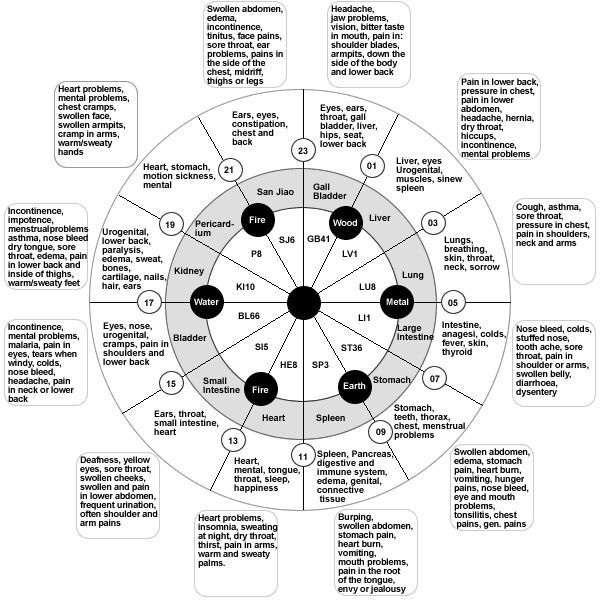
What to do if I wake up in the middle of the night
- Avoid looking at the clock to see what time it is. This can often just focus your attention on how long you've been awake rather than getting back to sleep.
- Don't get up to read, watch TV or play on your phone. Again blue light will breakdown melatonin levels leaving you with more of a tendency to stay awake or not be able to have good quality sleep when you do fall asleep.
Instead I suggest you focus on your breath and the sensation of your breath flowing in and out of your nostrils. If you wake with lots on your mind this is like a form of meditation known as Ana Pana. This is a technique taught in the early stages of Vipassana Meditation. If you find your mind drifting back to work, an argument or something on your mind gently bring your focus back to your breath.
Another breathing technique developed by US sleep expert Dr Andrew Weil is known as the ‘4-7-8' breathing technique. Weil claims that it works by calming the mind and relaxing the muscles helping to induce sleep.
Signs that your sleep-wake cycle is in sync
- You're ready for bed and sleep at a regular time each night – usually around 9 pm.
- You wake feeling relaxed and refreshed, perhaps waking naturally without the need for an alarm clock
- Regular bowel motions (usually in the morning)
- Flow to your day
- Ability to deal with stress
- Good moods
- Emotional stability- less snappiness, crying at the drop of a hat, and impatience.
- Improved learning capacity
- Increased productivity and efficiency
- Improved memory
- Better immunity and ability to fight viruses and infection
- Better healing capacity for minor knocks and strains
- Improved libido and regular menstrual cycle in women
What other remedies may help with sleep?
Anything that helps to relax the nervous system and reduce stress and anxiety will usually help you fall asleep. If sleep hygiene and simple breathing technique don't work for you consider:
- Consider getting some physical therapy like Osteopathy or Holistic Chiropractic to resolve any injuries or tight muscles
- A massage can be great to deal with stress and tension
- A good quality magnesium supplement can help people relax by calming the nervous system and reducing muscle tension. In addition, it helps those who suffer night-time cramps. Look for a high-quality magnesium that is easily absorbed (you'll get diarrhoea if it's not absorbed well). We recommend magnesium citrate or bisglycinate forms. Dose: 400-600 mg 1 hour before bed. Read our post on Which Magnesium Should I Take? for more information.
- Herbal tinctures can be very effective in helping you get to sleep and stay asleep. If you find that over the counter remedies don't cut it get in touch with a qualified Naturopath or Herbalist who can prescribe a blend of different herbs. Some of our favourites are zizyphus, skull cap and magnolia.
- Traditional Chinese Medicine can diagnose energetic and organ balances. They have some great acupuncture points to ease stress, anxiety and induce a sense of calm.
- Seeing your GP to get a prescription for melatonin. Yes, this sleep hormone is available in a tablet. This can help induce sleep quicker and encourage the body into a better natural rhythm. Melatonin can be taken to help you adjust better to timezone changes and jet lag.
- Hypnotherapy and cognitive behavioural therapy (CBT). Hypnotherapy can help rewire the brain and habits. CBT helps you to understand and counter negative thoughts and misconceptions that keep you awake.
Sweet dreams ZZzzzz…
The post How To Sleep Better – Secrets To A Good Night’s Rest appeared first on MetaMed.
]]>The post Why my Jaw Hurts and What treatment can Help. appeared first on MetaMed.
]]>What does the TMJ do?
The TMJ joint is a hinge joint with a small disc within the joint. It connects the jaw (mandible) to the skull. Small muscles that help us chew (masticatory muscles) also help to open and closes your lower jaw. The TMJ allows us to:
- Speak
- Eat and chew
- Make facial expressions
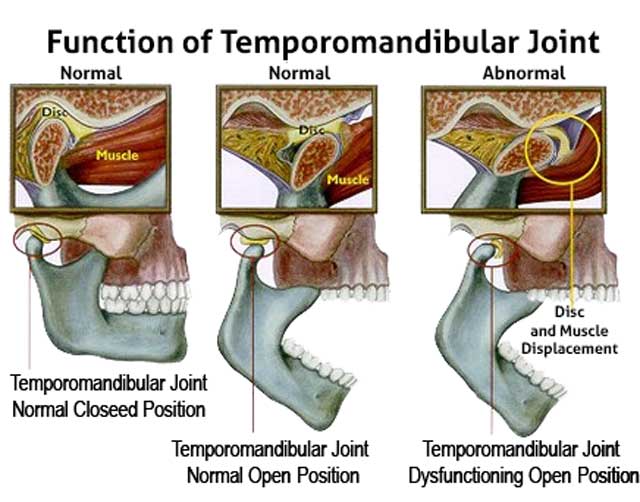
What causes pain in the jaw?
Some of these symptoms can be due to structural problems like tight muscles or an injury where the jaw was traumatised by impacts, such as getting kicked in soccer, falling over and knocking your chin, or dental procedures which may leave you to chew on one side of the mouth, or have your mouth open for a prolonged amount of time, even chewing gum too much can cause TMJ dysfunction. Other times the root cause may be emotional stress, nutrient deficiencies, and postural issues. Some patients who have autoimmune arthritic disorders like rheumatoid arthritis may be predisposed to having their TMJ affected.
Who is affected?
- Both men and women can be affected but women tend to experience issues with the jaw more than men
- Recent accident- this includes injury to the head as well as anywhere else in the body
- Recent dental work– wisdom teeth extraction, crowns, root canals or fillings
- Postural issues: poor posture, holding the phone between the ear and shoulder, leaning on your chin on your hand
- Those affected by autoimmune arthritis or have a family history of arthritis
- Recent surgery where intubation has been required
- Scuba divers due to the mouthpiece of your breathing apparatus
- Hormones and hormone replacement therapy may also play a role in TMJ dysfunction
Some common symptoms of TMJ dysfunction
When the TMJ is affected by pain or injury these two pretty mundane tasks can become awkward and painful.
- Locking of the jaw: locking open or jamming shut
- Not able to clench down on your back molars
- Pain and tenderness in the jaw at rest or whilst chewing
- Clicking
- Grinding sounds (crepitus)
- The jaw not tracking evenly when opening
- Difficulty speaking because your jaw won't open enough
- Difficulty eating and chewing or pain after eating hard foods
- Pain yawning
- Grinding the teeth at night (bruxism)
- Constant clenching of the jaw leading to a bulking of the muscles at the side of your cheeks
- Pain after dental work where you've had your jaw open for a prolonged period of time
The jaw can also refer pain elsewhere. Here's how else your TMJ pain may present:
- TMJ headaches and migraines particularly around the cheek and eye- dull, sharp or stabbing pain
- Inner ear pain
- The sensation of a blocked ear
- Sinus issues
- A toothache
- Pain around the base of the skull and front of the neck
- Pain on swallowing
- Dint marks from your molars on the sides of your tongue
- Ringing in the ears like tinnitus
- Dizziness
- Avoiding eating hard foods due to pain on chewing
- Wearing down of your teeth
- Waking with a sore face in the morning due to clenching or bruxism
- Pressure and pain in the base of the skull after orgasm- post-coital headache
What will your practitioner look at?
Our practitioners always consider the jaw with any head, neck and shoulder pain and vice-versa. Releasing the jaw can result in a huge amount of relief from chronic pain in these areas. But how do we treat it?
First, we need to assess the real cause of your jaw dysfunction. We'll go through a thorough history including asking you about any aches and pains you may experience anywhere in your body, including down to your toes. Every part of the body relates to one another. Any injuries that may have been sustained to the head, neck, and jaw itself and what exactly happened. Or was there another injury elsewhere that set your jaw pain off?
We also need to go through your past medical and family history this can give an indication if you are at risk of developing arthritis that may affect the jaw. Questions about your current stress are also very important and we find that this is often a cause for clenching and grinding the teeth.
We always have a look at how you are opening and closing your jaw to see how it tracks. Does it open smoothly in a straight line, or does it list left and right? Do you need to ‘unlock' your jaw to open it wider? Can you clench the back of your teeth together, and how does this feel? Are your muscles around your jaw and temples activating, are they tight or tender? Are there any sounds like crunching, popping or clunking when you open and close your jaw? Then we have a look at all the surrounding structures like your neck motion, shoulder range and even how you move through your lower back, hips, knees, and ankles.
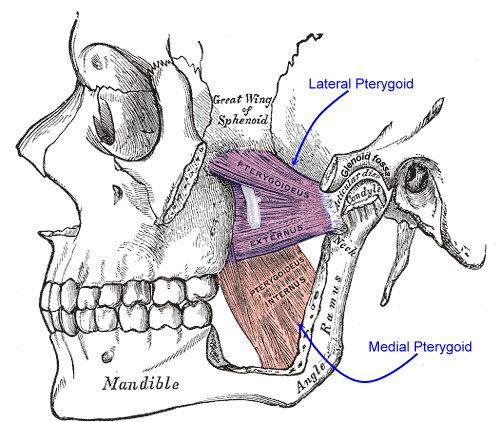
TMJ relief
There are many muscles that attach to the jaw and down to the neck through the front and at the back of the neck. Sometimes in response to the jaw being dysfunctional, these will develop trigger points. Trigger points are like tight bands or knots of muscle if tight enough they can produce pain when not in use and even send pain to a distant site. This is why you might feel ear pain, neck pain, and headaches if your jaw is not functioning properly. There are a few muscles on the inside of the jaw which aren't very accessible unless you actually get inside your jaw. That's why they often don't get treated. These are known as the medial and lateral pterygoids and help draw the hinge of the jaw forward and down articulating the disc smoothly inside the joint. If these are tight and not firing correctly this is where the disc can sometimes get caught and moves noisily within the joint.
We'll also assess your breathing and ask you about emotional stress as these issues can be a common trigger for jaw related issues.
Treatment may involve:
- Working on all the supporting musculature that directly relates to your jaw- head neck and shoulders
- Working inside your mouth with a gloved hand
- Treating the muscles around the face and head
- Treating the front and back of the neck and upper back
- Education about how you can help yourself between treatments- postural advice, eating soft foods, avoiding opening your jaw to its full range until it has settled, relaxation and breathing techniques
- You will be given a tailored TMJ exercise program to address issues in your jaw and neck function
We use a range of techniques including Osteopathy and Holistic Chiropractic deep soft tissue work, internal jaw releases using a gloved hand, joint mobilisations if necessary and dry needling. An experienced practitioner can use dry needling to release the facial muscles and muscles of mastication. Sound knowledge of underlying structures is important as nerves, vessels and glands traverse the TMJ.
Home remedies to help jaw pain
If you'd like to see if you can help your jaw before seeking treatment, here are a few tips you can try at home.
1. Become aware of the position of your jaw throughout the day. Take note of what it's doing if you get stressed, rushed or in an argument. Are you clenching without realising? The ideal resting position of the jaw is:
- Mouth closed
- Teeth slightly apart
- Tongue gently rests on the roof of your mouth
2. Gentle stretches to the neck and shoulders. Download our BASIC NECK STRETCHES.
3. Massage around the temples (next to the eye and into the scalp) and sides of the jaw
4. Eat soft foods and chew them gently on both sides of the mouth. Avoid eating things like apples, carrot, tough meat etc…
5. When you yawn support your lower jaw by applying gentle pressure to push the chin back as you yawn.
6. Take a high-quality magnesium supplement. New Zealand soils are deficient in magnesium so often we are too. Magnesium can help with muscle soreness, cramping as well and improving sleep.
7. Be aware of your breathing, altered breathing patterns are often triggered by stress, before we know it we adopt bad habits and do this unconsciously. Poor breathing can affect our ability to recover from stress, repair from trauma, sleep, immunity and energy levels. Ideally when you breathe at rest your belly rises and your chest stays still. Sometimes breathing properly takes more than just thinking about it. If you're having difficulty breathing properly there is a great online course by Physiotherapist and Wellness Architect Emma Ferris from the Butterfly Effect. Click here to find out more and get the first 5 days free.
8. Meditation and mindfulness can be very useful if you experience stress and anxiety. Again practising this on your own can be difficult some apps we recommend are Headspace and Calm.
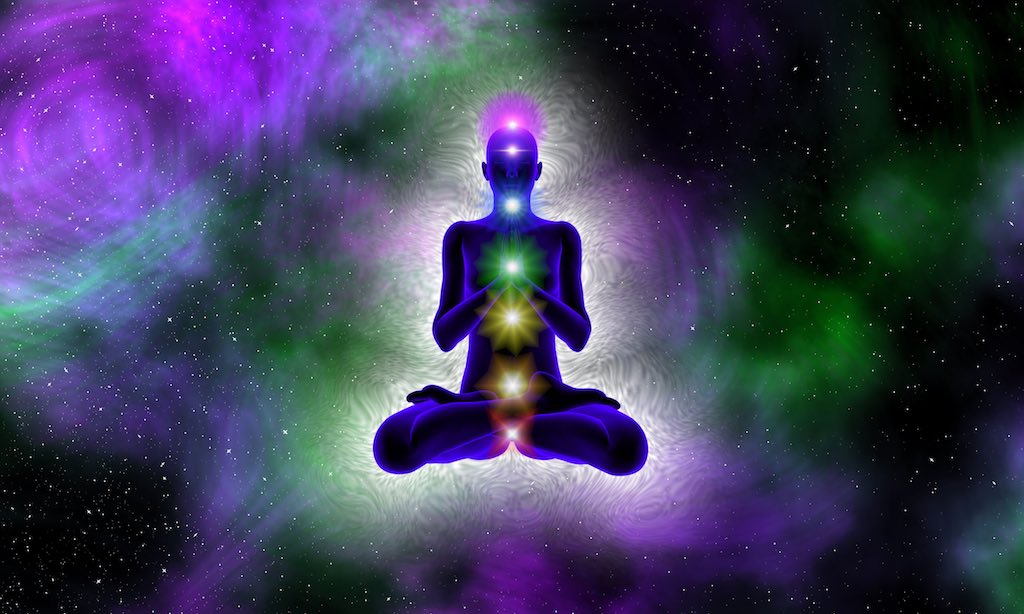
Psychosomatic interpretation of jaw pain:
We're big on psychosomatics and mind-body connection and the underlying emotion that may be maintaining pain and discomfort in the body. So what can the jaw indicate? The jaw relates to the solar plexus which governs emotions around identity, confidence, self-esteem and trust. The other main area of the solar plexus is represented around the stomach region from the lower ribs to the belly button. This is also where you find your main breathing muscle- the diaphragm. When the jaw is affected it can relate to emotions around expression of yourself, an inability to speak up and stand up for yourself, fear of sharing what you're passionate about because you're worried what people will think, difficulty communicating your wants and needs, holding onto stress and anger. See if you can relate to any of these as acknowledging the role emotions play in how your physical body feels is an important part of healing. Treatment can help facilitate the release of these emotions. You may find that when having the jaw treated it is a highly emotional spot triggering anger, heat and tears. Releasing these emotional tensions can be a huge relief and be the start to a pain free jaw.
Other treatment options.
We always recommend trying a few sessions of physical therapy first. If there is no change your practitioner may recommend seeing other practitioners such as your GP, dentist, ear-nose and throat (ENT) specialist to rule out pain coming from other areas such as your sinus or teeth. If you've addressed other factors like sleep, stress and breathing there are a few other options available. These include:
- seeing your GP for help with relaxant type medications
- a dentist can make a splint that you wear at night
- hypnotherapy to help rewire behavioural patterns like stress
- some specialists inject botox into the muscles to force the muscles around the jaw to relax
- in intractable cases TMJ surgery is an option by an orofacial surgeon
If you are experiencing jaw issues or think that your symptoms are related to the jaw our practitioners are experienced treating this complex joint. For treatment of jaw pain in Wanaka and Queenstown.
The post Why my Jaw Hurts and What treatment can Help. appeared first on MetaMed.
]]>